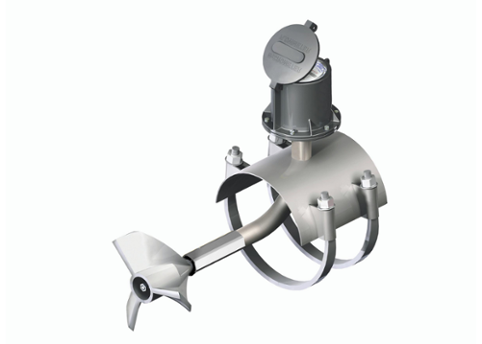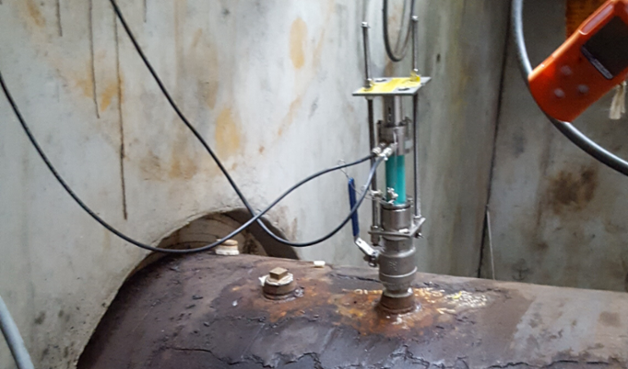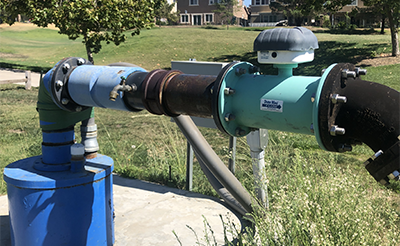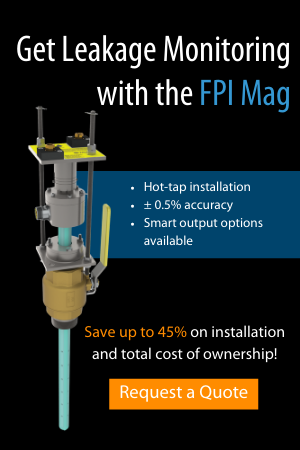4 Reasons to Combine Telemetry with Flow Measurement
As the world’s population continues to grow, food production must keep up with the increasing demand. The agriculture industry is constantly looking for ways to increase efficiency and output without sacrificing quality. One way to achieve this is by implementing real-time monitoring systems, such as telemetry, combined with flow measurement.
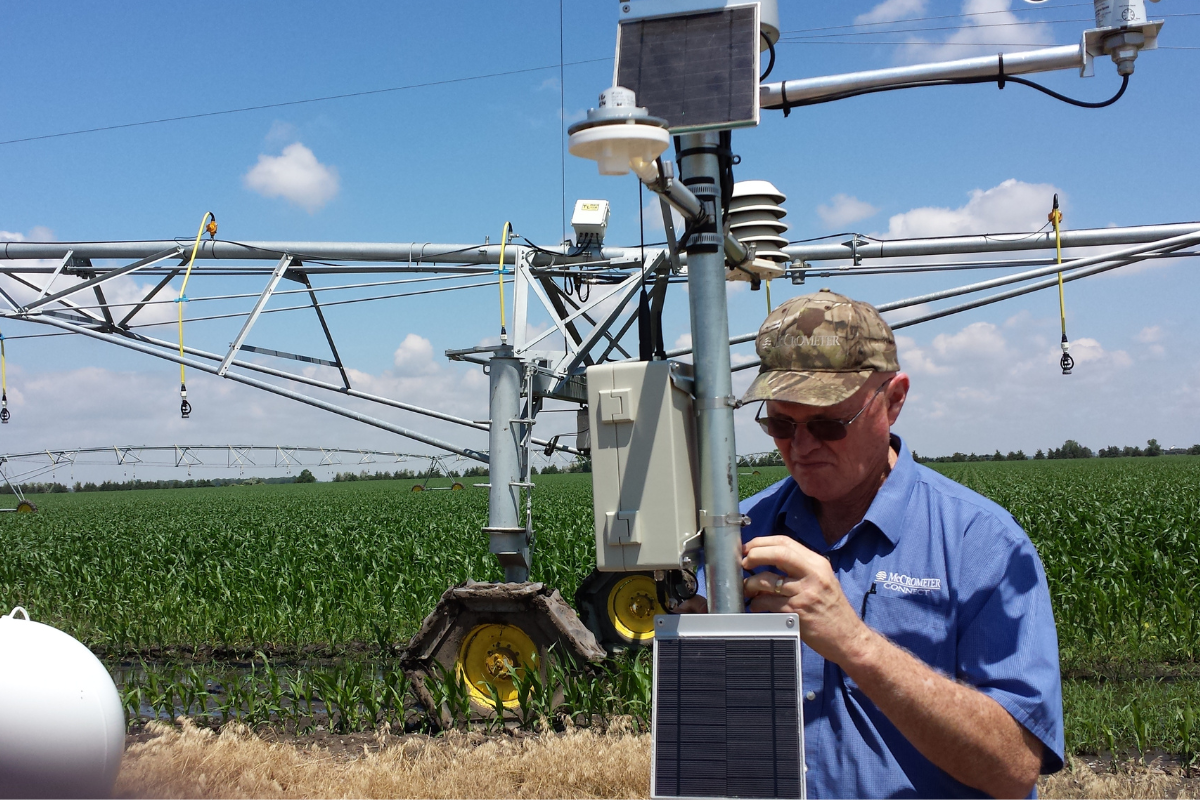
A McCrometer representative installing a solar-powered telemetry unit and weather station.
What is telemetry?
Telemetry is the automated communication process that allows data to be collected remotely from sensors and transmitted to a central monitoring system. By combining telemetry with flow measurement, farmers can easily monitor important metrics such as water and fertilizer usage and adjust their farming practices accordingly.
Agricultural flow metering is a critical component of modern irrigation systems, as the data acquired is essential for optimizing water usage and increasing crop yield while reducing waste. Telemetry systems for agricultural flow metering typically consist of flow meters installed in the irrigation lines, wireless communication devices, and a central monitoring system. The flow meters measure the volume of water passing through the system, and the wireless communication devices transmit this data to the central monitoring system, where it can be analyzed and used to make decisions about irrigation management.
Here are some of the benefits of using telemetry combined with flow measurement in the agriculture industry:
1. Reducing Water Usage
With the world facing an increasing scarcity of water resources, it is essential to reduce water consumption in farming practices. Telemetry combined with flow measurement can help farmers achieve this by providing accurate data on water usage. Farmers can then use this data to make informed decisions about irrigation, making sure that they use only the amount of water that is necessary for their crops. This not only saves water but also reduces bills for farmers.
2. Increasing Crop Yields
By monitoring key metrics such as water and fertilizer usage, farmers can optimize their crop yields. Telemetry combined with flow measurement can provide a more detailed picture of what is happening in the field, allowing farmers to identify areas where adjustments need to be made. By fine-tuning their irrigation and fertilizer application methods based on accurate data, farmers can improve crop health and increase yields.
By using data-driven decision-making, farmers can optimize crop yields and maximize profits, working “smarter not harder.” By monitoring crop irrigation in real time, any issues or problems that arise such as leaks, clogs, etc. can be handled immediately, allowing crops to receive the necessary water to grow and thrive.
3. Saving Time and Resources
Monitoring crops and water usage manually is a time-consuming task. By using telemetry combined with flow measurement, farmers can automate this process, saving time and resources. The technology behind telemetry eliminates manual meter reading, which means that farmers can spend less time traveling to their fields and checking on their irrigation systems, freeing up time for other tasks. This also reduces labor costs in the long run, affecting an irrigator’s bottom line.
Telemetry systems provide farmers with valuable data on their irrigation system and crop performance. This data can be analyzed to identify areas where improvements can be made, such as optimizing water usage or adjusting irrigation schedules. By using this data to make informed decisions, farmers can save resources and reduce costs.
4. Improving Environmental Sustainability
By reducing water usage and optimizing fertilizer application, farmers can reduce their environmental impact. This, in turn, promotes environmental sustainability, which is essential for the future of the planet. With telemetry combined with flow measurement, farmers can make informed decisions about how to manage their land sustainably.
Telemetry systems provide real-time data on water usage, which allows farmers to optimize water application rates and reduce water waste. This not only saves on a farmer’s annual water allocation, but also reduces the energy costs required to pump water and the associated greenhouse gas emissions.
Telemetry can also help to prevent overwatering, which can lead to soil erosion and nutrient leaching, which can negatively impact soil health. By using telemetry data to optimize water usage, farmers can reduce the potential for these issues and maintain healthy soil. Ultimately, this kind of precision farming can reduce the potential for environmental damage.
Telemetry as an Integral Part of Agtech
Telemetry combined with flow measurement has numerous benefits for the agriculture industry. By providing accurate data on water usage and crop health, farmers can optimize their farming practices, increase yields, save time and resources, and improve environmental sustainability. With the world’s population continuing to grow, the agricultural industry must embrace new technologies to ensure that food production keeps up with demand. Telemetry combined with flow measurement is one such technology that can help farmers achieve these goals.
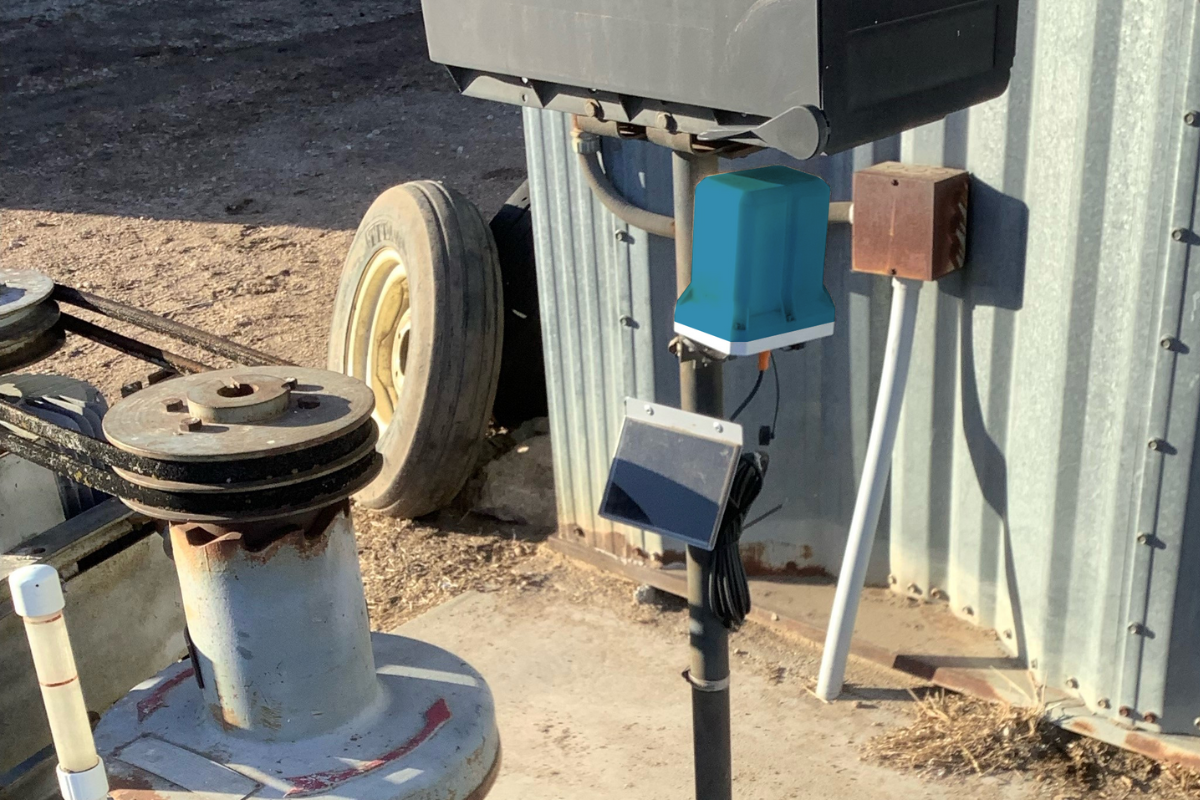
McCrometer’s recently launched SmartTrax™ telemetry product, the newest agtech product to the connected solutions suite.
Telemetry is a critical component of the Internet of Things (IoT) of agriculture. The IoT refers to the network of connected devices and sensors that gather data and share information to enable smarter decision-making in agriculture. Telemetry plays a crucial role in the IoT of agriculture by providing the means to collect and transmit data from various sensors and devices used in agricultural operations. Telemetry devices that connect irrigation systems with weather stations, soil moisture sensors, and more can provide a more complete picture of environmental conditions and enable farmers to optimize their operations.
Automated irrigation, pest management, and soil optimization can all work together in the IoT of agriculture to reduce a grower’s costs, labor, and time otherwise spent manually monitoring and managing these interconnected tasks.
Telemetry is a key component and agriculture technology (agtech). By enabling the integration of disparate systems and automating agricultural operations, telemetry helps farmers optimize operations and increase productivity while reducing waste and improving sustainability.
Related Posts
Featured Posts
Choosing the Right Non-Contact Flow Meters: A Quick Dive into Radar and Laser Technologies
When measuring open channel flow wastewater and stormwater, non-contact flow technology is the ideal method, able to provide an accurate velocity and flow rate. Especially in the wet weather season, non-contact flow technology greatly benefits open channel...
Meeting BABA Compliance And Expanding Opportunities
Content Recorded and Published at WEFTEC in October 2024 In this episode of The Water Online Show: On Location, (now former) McCrometer President Pete Oveson dives into the company's story and recent developments shaping its future. He begins with an overview of...
McCrometer, Inc. Announces Redesign of FlowComTM Digital Register
FOR IMMEDIATE RELEASE: September 3rd, 2024Contact: Aimee Davis, Vertical Marketing Manager, Agriculture McCrometer, Inc.AimeeD@mccrometer.com Hemet, Calif. – McCrometer, Inc., a globally recognized flow meter manufacturer, today announced the launch of their...
Request More Information

